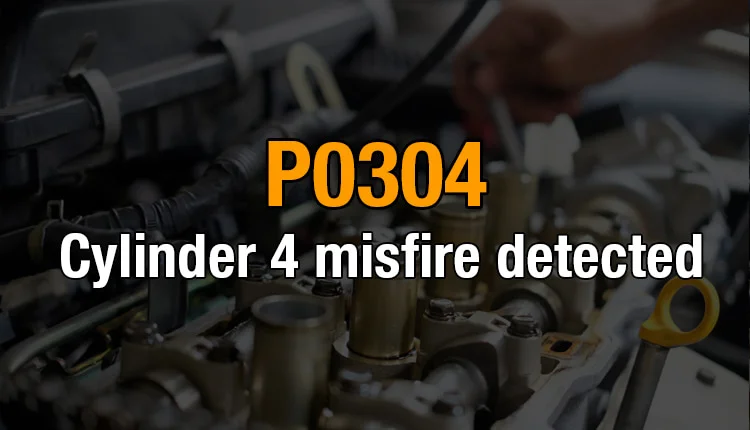If your engine is lurching, sputtering, or experiencing reduced power, chances are you have a misfire. A misfire occurs when one or more cylinders fail to combust properly, disrupting the engine’s smooth operation. In this article, we will delve into the specific issue of a misfire in cylinder 4, exploring its causes and providing a comprehensive guide to resolving it effectively.

Image: obdadvisor.com
Understanding Misfires in Cylinder 4
Cylinder misfires can be caused by various factors, including faulty spark plugs, worn-out ignition coils, vacuum leaks, or mechanical issues. A misfire in cylinder 4 indicates that the combustion process in that particular cylinder is not taking place as it should. This can manifest in several symptoms, such as:
- Engine shuddering or vibration
- Loss of power or acceleration problems
- Rough idling
- Check engine light illumination
Step-by-Step Troubleshooting
Fixing a misfire in cylinder 4 requires a methodical approach. Here is a step-by-step guide to help you pinpoint and resolve the issue:
Step 1: Check Spark Plugs
Start by inspecting the spark plugs in cylinder 4. Ensure they are properly gapped, free from debris, and have no signs of damage or excessive wear. Replace faulty or worn-out spark plugs.

Image: www.vwvortex.com
Step 2: Examine Ignition Coil
The ignition coil provides the high voltage necessary for spark plug ignition. Remove the ignition coil connected to cylinder 4 and check its condition. Look for visible cracks, damage, or corrosion. Replace the ignition coil if necessary.
Step 3: Inspect Vacuum Lines
Vacuum leaks can disrupt the air-fuel mixture, leading to misfires. Inspect all vacuum lines for any cracks, tears, or loose connections. Check the vacuum hoses that directly connect to cylinder 4. Repair or replace any damaged vacuum lines.
Step 4: Test Compression
Low compression in cylinder 4 can result in a misfire. Perform a compression test to measure the cylinder’s compression pressure. A low compression reading indicates potential mechanical issues, such as worn-out valves, piston rings, or a cracked cylinder head. In such cases, further mechanical repairs may be necessary.
Step 5: Clean or Replace Fuel Injector
A clogged or faulty fuel injector can restrict fuel delivery to cylinder 4, causing a misfire. Disconnect the fuel line to the injector and use carburetor cleaner to flush out any debris or contamination. If the injector is severely damaged, replace it with a new one.
Expert Insights and Tips
Beyond the aforementioned steps, consider these additional advice from mechanics:
- Regularly service your vehicle, including routine spark plug replacement and ignition coil inspection.
- Use high-quality spark plugs and ignition coils recommended for your vehicle.
- Avoid running your engine on low fuel, which can lead to fuel pump damage and affect fuel delivery.
- If you suspect a vacuum leak, use a smoke machine to identify and fix any leaks.
- Seek professional assistance if the misfire persists or if you encounter any mechanical complications during the troubleshooting process.
How To Fix A Misfire In Cylinder 4
Conclusion
A misfire in cylinder 4 can be frustrating, but by following the steps outlined in this guide, you can accurately diagnose and repair the issue. Remember to approach your repairs with caution, especially when dealing with electrical components. If you feel overwhelmed or encounter mechanical problems beyond your expertise, do not hesitate to consult with a qualified mechanic or automotive professional for further assistance. By addressing misfires promptly and effectively, you ensure smoother engine operation and optimal vehicle performance.